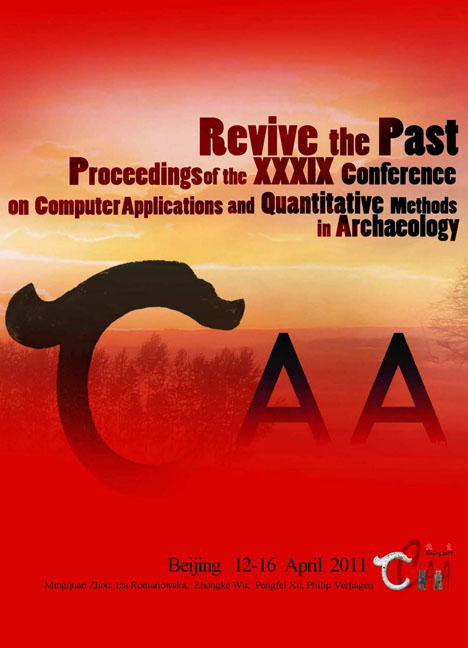 Revive the Past
Revive the Past Developing an “Archaeological” Benchmarking Procedure
Published online by Cambridge University Press: 23 June 2021
Summary
Abstract:
The present paper reports an ongoing project aiming at developing an “archaeological” benchmarking procedure for the definition of the most suitable methodology for 3D models creation, to adopt for different research goals such as conservation, virtual restoration and web visualization of archaeological objects. The test has been carried out on some archaeological artefacts, differing in size, material, shape, texture and surface characteristics, focusing on the possible applications of the outcomes and on diverse parameters offered from the device. A low cost 3D laser scanner (NextEngine) was chosen for the test, because of its cost affordability, especially for museums and Cultural Heritage (CH) institutions. The result of the qualitative analyses performed by professionals on the scanned objects (archaeologist, ceramist, paleoanthropologist), along with issues that emerged during data acquisition and data post-processing, allowed us making recommendations useful for Cultural Heritage professionals interested in applying digital technologies in their daily work.
Key Words: Laser Scanning, Archaeological Objects, Benchmarking
Introduction
Three-dimensional scanning devices are increasingly adopted by CH professionals for recording archaeological sites and artefacts for documentation, conservation and dissemination purposes.
Currently there is still a lack of a wellestablished methodology concerning the digital acquisition of archaeological artefacts. Therefore the definition of guidelines for digital data acquisition and post-processing is strongly required in order to assess and validate the quality of the final results and adapt the 3D models creation process to the needs and aims of the users.
Furthermore it could be a waste of time and money choosing instruments not suitable for the aim of the research: for example using cheap devices providing low quality results or using improperly an expensive laser scanner without exploiting the potential of the instrument.
In approaching 3D scanning devices the first question of CH experts is always related to the choice of the most suitable device and methodology to adopt for their work, giving more attention to the correlation with the different scenarios that the technology can offer, rather than a purely metrological aspect. Unfortunately there is not a single answer to this question, because many criteria are involved in the decision making.
- Type
- Chapter
- Information
- Revive the PastProceedings of the 39th Conference of Computer Applications and Quantitative Methods in Archaeology, pp. 13 - 20Publisher: Amsterdam University PressPrint publication year: 2012


